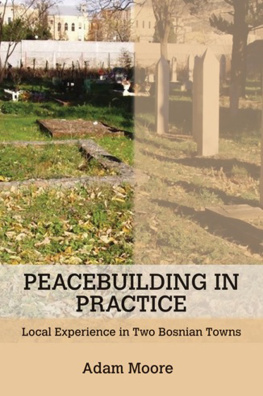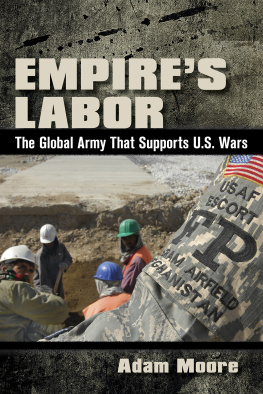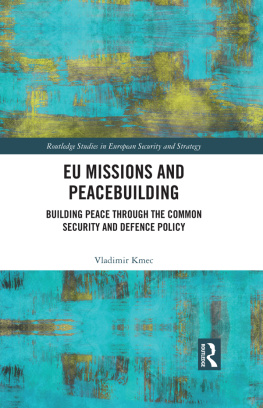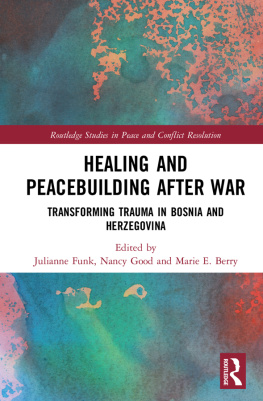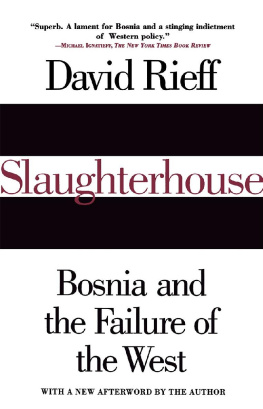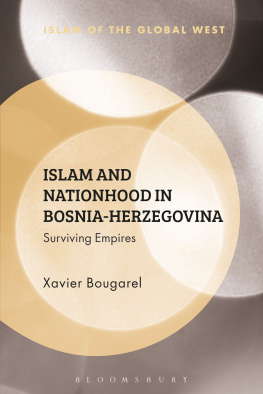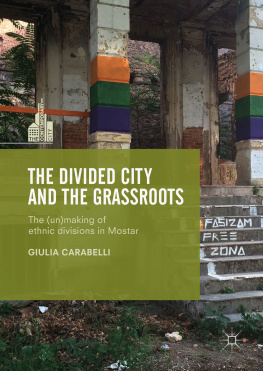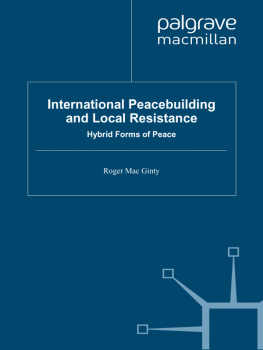ACKNOWLEDGMENTS
One accumulates many debts over nearly a decade of research. I am particularly grateful for the generous support of people I met during fieldwork in Bosnia. Asim Mujki at the University of Sarajevo has been a great mentor and friend throughout the project. This book would not have been possible without the invaluable assistance over the years of Djanan Bakamovi, Ljiljana eti, Dragan Dunji and Goran Karanovi. There is insufficient space to mention all the friends who made my time in Mostar and Brko a wonderful experience, but a special mention is necessary for ato and Ado at the Iron Horse in Brko.
Several local and international officials and academics in Bosnia were especially gracious with their time, hospitality, and information (including access to archival materials). I would like to thank in particular Jasmin Adilovi, Peter Appleby, Mark Bowen, Amela Bozi, Edin elebi, Robert Bill Farrand, Susan Johnson, Ivan Krndelj, Osman Osmanovi, Roberts Owen, Matthew Parish, Nikola Risti, Adin Sadi, and Gerhard Sontheim. Bill, Susan, Roberts, and Matthew also provided detailed comments on an earlier version of chapter 7, as did Gerhard on chapters 4 and 6.
This project has also benefited greatly from conversations with friends, colleagues, and mentors at various stages in the process, including Fedja Buri, Katie Hampton, Peter Locke, Paul Nadasdy, and Scott Straus. Special thanks goes to Bob Kaiser, my graduate advisor at the University of Wisconsin, Madison, who, over the years, has taught me more than I can recount here. Sverine Autesserre provided very helpful feedback on chapters 6, 7, and the conclusion, as did Lieba Faier with the introductory and concluding chapters. Gail Kligman, John Agnew, and Reece Jones read a full draft of the manuscript. I would like to thank them and the two anonymous reviewers for their insightful comments. My editor, Roger Haydon, has been a joy to work with, as have all the other staff at Cornell University Press. Matt Zebrowski, our cartographer here at UCLA, did yeomans work in transforming my rudimentary maps into finished versions that are much more informative and aesthetically pleasing.
Funding for this research was provided by the Council for European Studies; International Research and Exchanges Board (IREX); the United States Institute of Peace; the University of Wisconsin, Madison, Geography Department; and both the International Institute and Geography Department at UCLA. I am grateful for the generous financial support offered by all of these institutions.
Finally, I would like to recognize my parents, my wife, Lori, and my daughter, Danica: without your love and support none of this would have been possible. This book is dedicated to Danica, moja mala princeza .
INTRODUCTION
My first visit to Brko came as a shock. The southern parts of the town made it look as if the world had come to an end. Snow covered the ruins, which stretched as far as the eye could see. But what made the greatest impression was not what could be seen, but what the ear could not hear. There was absolute silence. Life always involves soundsa dog, a child, traffic on a distant road. But here there was nothing, just silence and ruins. There was nothing left at all.
CARL BILDT, BOSNIAS FIRST HIGH REPRESENTATIVE
In November 2007 I was conducting fieldwork in the city of Mostar in the Herzegovina region of southeastern Bosnia when the town was rocked by two days of violent clashes between Croat and Bosniak youth. Three people were hospitalizedone with a severe knife wound to the neckand a dozen arrested.
The following day was the Derby, the annual game between Zrinjski and Vele, the Croat- and Bosniak-supported football teams in the city, respectively. The match was held in a stadium in West Mostar, the Croat-dominated side of the city. At previous Derby matches fights between Zrinski and Vele fans had broken out during and after the game, so several hundred police were already scheduled to be on duty at the stadium and in the streets of Mostar. As a further precaution Vele supporters were to be bussed to and from the stadium. I came across these preparations the next morning in the citys Old Town in East Mostar while walking to a caf to meet friends for coffee. Dozens of police wearing riot gear were searching the belongings of Vele supporters as they boarded a line of buses. Two police vans idled in front and behind, ready to escort the procession to the stadium a mere kilometer away. Meanwhile hundreds of police wielding shields and batons lined the procession route in West Mostar.

